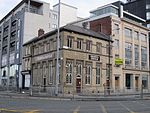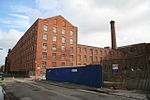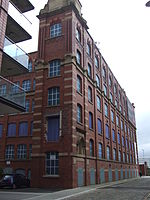Manchester Oldham Road railway station
Disused railway stations in ManchesterFormer Lancashire and Yorkshire Railway stationsPages with no open date in Infobox stationRailway stations in Great Britain closed in 1844Railway stations in Great Britain opened in 1839 ... and 1 more
Use British English from July 2017
Manchester Oldham Road station opened in 1839 as the terminus station of the Manchester and Leeds Railway (M&LR) in Collyhurst, Manchester. When the M&LR opened Manchester Victoria in 1844 as its new Manchester passenger station Oldham Road was converted to a goods station which it remained until its closure in 1968.
Excerpt from the Wikipedia article Manchester Oldham Road railway station (License: CC BY-SA 3.0, Authors).Manchester Oldham Road railway station
Cassidy Close, Manchester Collyhurst
Geographical coordinates (GPS) Address Nearby Places Show on map
Geographical coordinates (GPS)
| Latitude | Longitude |
|---|---|
| N 53.487216 ° | E -2.228851 ° |
Address
Fire & Rescue Service Training Centre: Car Park
Cassidy Close
M4 5FS Manchester, Collyhurst
England, United Kingdom
Open on Google Maps










